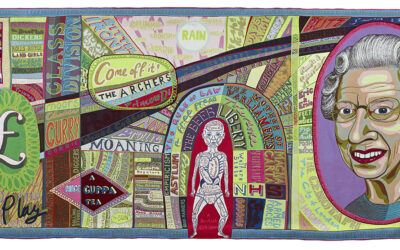The search queries tell a story. “Therapist Birmingham one session.” “Single session therapy Alabama.” “Quick therapy near me.” As a clinical director at Taproot Therapy Collective in Birmingham, I see these searches increasing every month, and they reveal a fundamental misunderstanding about what therapy actually is and how healing works.
I often tell the people who come to see me that if I could redesign the human brain, I’d make it work differently. Unfortunately, it works the way it does. You can intellectually understand your problems, talk about them for twenty years while smoking cigarettes on your porch, analyze them with friends, read every self-help book on the shelf, and still find that your body holds onto trauma in ways that conversation alone cannot touch. This is precisely why the only way out is through.
The Myth of One-Session Therapy
When people search for “one session therapy” or ask if we can “fix” their issues in a single appointment, what they’re really expressing is a combination of hope and fear. Hope that their suffering can end quickly, and fear about the financial and emotional investment that real therapy requires. I understand both impulses deeply, yet I need to be clear: therapy is not a transaction where you purchase insight like buying groceries. It’s a relational process that unfolds over time.
Even at a clinic like Taproot, where we pride ourselves on using cutting-edge, accelerated modalities, where we push the boundaries of traditional talk therapy with approaches that can seem almost aggressive in their effectiveness, the work still takes time. We employ brainspotting, which can access trauma stored in the subcortical brain far faster than traditional methods. We use Emotional Transformation Therapy (ETT), which harnesses specific wavelengths of light to facilitate profound neurological shifts. We integrate somatic and experiential techniques that expand a client’s window of tolerance and their capacity to process traumatic material. Yet even with these powerful tools, even with our reputation for being “pushy” therapists who don’t let clients hide behind intellectualization, the fundamental truth remains: healing happens in relationship, and relationships require time to develop.
Why Your Therapist Needs to Know Your Story
There’s a reason therapy cannot be reduced to a single session, and it has nothing to do with therapists wanting to string you along for financial gain. When you sit across from a therapist, you’re not just presenting a problem to be solved. You’re bringing your entire life history, your patterns of relating, your defenses, your wounds, and your strengths. The therapist needs to understand not just what happened to you, but how you’ve organized your entire psychological life around those experiences.
Consider this: when we use a modality like brainspotting, which can activate dramatic somatic and emotional responses, those activations don’t occur in a vacuum. They bring up stories, memories, and associations that need to be contextualized and integrated. A single powerful session might crack open a door, but walking through that door and exploring what’s on the other side requires ongoing support and witnessing. The therapeutic relationship itself becomes the container that allows you to safely explore territories of experience that you’ve likely spent years avoiding.
This relational aspect of therapy is not optional or supplementary; it’s the core of how therapy works. Research consistently shows that the therapeutic alliance, the quality of the relationship between therapist and client, is the strongest predictor of positive outcomes, regardless of the specific modality being used. You cannot Amazon Prime your way to mental health. You cannot download healing like an app. The human psyche doesn’t operate on the timeline of modern consumer culture.
The Economics of Desperation
I recognize that the search for one-session therapy often stems from economic insecurity. People are terrified of wasting money on therapy, especially if they’ve had negative experiences in the past. They’ve been burned by therapists who seemed to talk endlessly without facilitating real change, or they’ve encountered the labyrinthine nightmare of insurance coverage, where procedures they were told would be covered suddenly generate massive bills. The fear of healthcare costs, of insurance scams, of investing in something that might not work, is real and valid.
Yet here’s something many people don’t understand about the economics of therapy, particularly if you have insurance coverage through a major provider like Blue Cross Blue Shield. When you see any therapist who accepts BCBS, the copay structure is standardized according to CPT codes. An initial intake session uses code 90791. A standard 60-minute therapy session uses code 90837. A 45-minute session uses code 90834. This means that whether you’re seeing a newly licensed therapist or someone with decades of specialized training, if they’re both in-network with your insurance, your out-of-pocket cost is identical.
This standardization creates a paradox: you might think you’re saving money by seeing a less experienced therapist, but if you’re using insurance, the session costs you the same amount. Meanwhile, a therapist with advanced training in specialized modalities might be able to help you achieve your therapeutic goals in fewer sessions overall. A therapist trained in brainspotting or EMDR might help you process trauma in months that could take years with traditional talk therapy alone. A clinician skilled in neurofeedback or qEEG brain mapping can identify and target specific neurological patterns that contribute to your symptoms, potentially accelerating your progress significantly.
The Investment Fallacy
When people tell me they want to “try” therapy for one session to see if it “works,” I often use the analogy of physical fitness. You wouldn’t go to a gym once and expect to be in shape. You wouldn’t take a single piano lesson and expect to play Chopin. Yet somehow, when it comes to rewiring deeply embedded psychological patterns, restructuring attachment styles formed in early childhood, or processing complex trauma, people expect instantaneous transformation.
This isn’t because people are naive or unreasonable. It’s because our culture has conditioned us to expect quick fixes, and because the mental health field itself has sometimes oversold the promise of rapid change. Yes, breakthrough moments happen in therapy. Yes, some modalities can produce dramatic shifts in single sessions. But sustainable change, the kind that actually transforms how you move through the world, requires integration time. It requires the ongoing support of someone who knows your story, recognizes your patterns, and can help you navigate the inevitable regressions and resistances that arise when you’re doing deep psychological work.
Understanding Therapeutic Tempo
At Taproot, we work at what many might consider an aggressive pace. We don’t believe in endless sessions of circular conversation. We use interventions that directly target the subcortical brain where trauma is stored. We push clients to expand their window of tolerance, to feel more than they’re comfortable feeling, to access parts of themselves they’ve kept locked away. But even this accelerated approach respects the fundamental truth that the psyche has its own timing.
When someone comes to us after years of self-help books, after trying to think their way out of their problems, after hoping that insight alone would create change, we validate their efforts while explaining why those approaches often fall short. The prefrontal cortex, where insight and rational understanding live, is not where trauma is stored. You can understand perfectly why you react the way you do and still find yourself hijacked by the same patterns. This is why somatic and experiential approaches are so powerful: they work with the body and the emotional brain directly, bypassing the intellectual defenses that can keep us spinning in place.
But even these powerful approaches require a relational container. When brainspotting activates a traumatic memory, when ETT brings up unexpected emotional material, when somatic work releases long-held tension patterns, you need someone there who can help you make sense of what’s emerging. You need someone who knows enough about your history to help you connect the dots, to recognize patterns, to celebrate breakthroughs and normalize temporary setbacks.
The True Cost of Cheap Therapy
There’s another economic reality we need to address: the false economy of choosing therapists based solely on their hourly rate. If you’re paying out of pocket and choose a therapist charging $60 per session over one charging $150, but the less expensive therapist takes three times as long to help you achieve your goals, you haven’t saved money. You’ve spent more money, more time, and endured more unnecessary suffering.
Moreover, ineffective therapy carries hidden costs beyond the financial. There’s the opportunity cost of remaining stuck in patterns that limit your career advancement or damage your relationships. There’s the cost of continued anxiety or depression on your physical health. There’s the cost of self-medication, whether through substances, compulsive behaviors, or other maladaptive coping strategies. When you factor in these hidden costs, investing in effective therapy with a skilled practitioner often becomes the most economical choice.
Reframing the Question
Instead of asking “Can therapy work in one session?” a more useful question might be “What kind of therapeutic support do I need to create the changes I’m seeking?” Instead of searching for the cheapest or quickest option, consider what combination of expertise, approach, and fit would give you the best chance of achieving your goals.
If you’re dealing with specific trauma, look for someone trained in trauma-focused modalities. If you’re struggling with long-standing patterns rooted in early attachment, seek out someone who understands developmental trauma and attachment theory. If you’ve tried traditional talk therapy without success, explore somatic or experiential approaches. The goal isn’t to find the fastest or cheapest path, but the most effective one for your particular situation.
A Different Kind of Urgency
I understand the urgency people feel when they’re suffering. The desire for relief is not just reasonable; it’s a healthy impulse toward healing. But we need to redirect that urgency from seeking instant fixes toward finding the right therapeutic fit and then committing to the process. The urgency should be in starting the real work, not in trying to bypass it.
When someone tells me they only want one session, I hear the fear underneath that request. Fear of dependence, fear of vulnerability, fear of discovering things about themselves they’d rather not know, fear of hope itself. These fears are valid and deserve respect. But they also deserve to be addressed within the therapeutic process, not by avoiding the process altogether.
The Reality of Relational Healing
Therapy works because humans are fundamentally relational beings. Our wounds happen in relationship, and our healing happens in relationship too. The therapeutic relationship provides something unique: a consistent, boundaried space where you can bring all parts of yourself without fear of judgment or abandonment. Where patterns can be observed and interrupted. Where new ways of being can be practiced and integrated.
This relational aspect cannot be compressed into a single session any more than you can compress a friendship into a single conversation. Trust takes time to build. Patterns take time to recognize. Defenses take time to soften. And the unconscious material that drives so much of our behavior takes time to surface and be integrated.
Even with the most powerful modalities at our disposal, even with approaches that can create profound shifts in single sessions, the work of therapy is ultimately the work of relationship. And relationships, by their very nature, unfold over time. They deepen through consistency. They strengthen through weathering challenges together. They create change through the accumulated impact of many moments of meeting, not through a single dramatic intervention.
Moving Forward
If you’re searching for therapy in Birmingham or anywhere else, I encourage you to reframe your search. Instead of looking for someone who promises quick fixes or single-session solutions, look for someone whose approach resonates with you, whose training matches your needs, and with whom you feel you could build a trusting relationship. Consider it an investment not just in solving a current problem, but in developing a relationship with your own psyche that will serve you throughout your life.
Remember that if you have insurance coverage, particularly through major providers like Blue Cross Blue Shield, the cost structure is often standardized, meaning that choosing a more experienced therapist doesn’t necessarily cost you more per session. And even if you’re paying out of pocket, consider the true economics of effective versus ineffective therapy. Sometimes spending more upfront for skilled, specialized treatment saves money in the long run by achieving results more efficiently.
The search for one-session therapy is really a search for relief, for hope, for change. These are beautiful impulses that deserve to be honored. But they also deserve to be met with approaches that can actually deliver on their promise. And that requires time, relationship, and a willingness to engage with the process of therapy as it actually works, not as we might wish it would work. The only way out truly is through, but you don’t have to go through it alone. That’s what therapy, at its best, offers: a companion for the journey, someone who knows the terrain and can help you navigate it, not in a single session, but through a relationship that unfolds over time.



























0 Comments